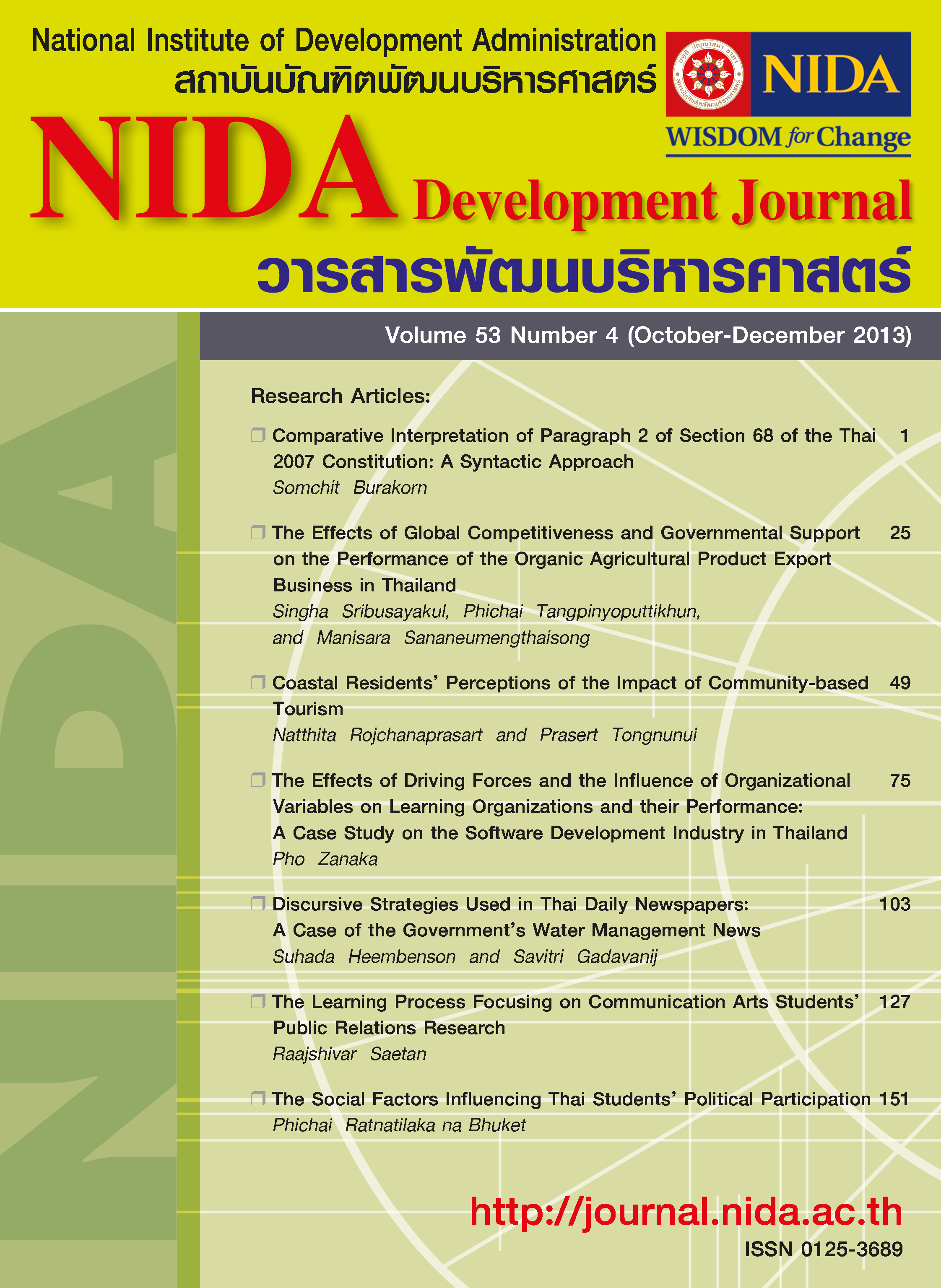Discursive Strategies Used in Thai Daily Newspapers: A Case of the Government’s Water Management News
Keywords:
Discursive Strategies, Critical Discourse Analysis, Thai Daily Newspapers, Government’s Water Management NewsAbstract
Drawing upon Critical Discourse Analysis (CDA), this study investigates the discursive strategies used by Thai daily newspapers to present news about the government’s water management. The purpose is to identify discursive strategies employed in the presentation of the government’s endeavor to manage the water crisis in 2011 and to investigate the functions of these strategies in constructing the public’s image of the government. In all, 30 pieces of the government’s water management news are gathered from the 3 Thai daily newspapers, Thairath, Daily News and Khaosod from November 1, 2011 to February 29, 2012.
The present study is conducted on 2 levels. At the macro level, it adopts Fairclough’s Critical Discourse Analysis (CDA) framework to reveal the dialectical relationship between the discourse of the news and society. At the micro level, the text is analyzed by using approaches in Systematic Functional Linguistics (SFL) to identify discursive strategies employed. The f inding indicates that 10 discursive strategies are used, namely 1) naming, 2) transitivity, 3) impersonalization, 4) exclusion, 5) assimilation, 6) metaphor, 7) choice of backgrounding action, 8) verb creating government’s credibility, 9) negative lexicalization and 10) choice of representing others voice. These strategies have different communicative functions to help text producers achieve their aims in inf luencing and shaping audiences’ perceptions regarding the government’s water management scheme.





